
Churn Prediction: In-Depth Guide + 7 Powerful Tools

by
Aleksa Mitrovič
Oct 8, 2024
Identify and convert your most valuable users
Sign Up
Introduction
Customer retention has become a critical factor in determining the long-term success of any company. One of the key metrics used to measure customer retention is the churn rate – the percentage of customers who stop using a product or service within a given time frame. Understanding and predicting churn can help businesses take proactive measures to retain customers and maintain steady growth.
This blog post delves into the intricacies of churn prediction, exploring how it's calculated, the mechanisms behind it, and its significance in modern business strategies.
We'll examine the data-driven approaches and machine learning techniques that power accurate churn predictions, and provide insights on how businesses can implement these strategies to improve customer retention.
How Do You Predict Churn Rate?

Predicting churn rate is a complex process that involves analyzing historical data and leveraging machine learning models to identify patterns that indicate a customer is likely to leave. This process takes into account both historical and current customer data to make accurate predictions. Let's break down the key steps involved in predicting churn rate:
Data Collection

The foundation of any churn prediction model is robust and relevant data. Businesses need to gather a wide range of information about their customers, including:
User patterns: How often customers use the product or service, which features they engage with most, and at what times.
Transaction history: Purchase frequency, average order value, and total customer lifetime value.
Customer service interactions: Frequency and nature of support tickets, resolution times, and customer satisfaction scores.
Demographic information: Age, location, industry, company size (for B2B), and other relevant factors.
The more comprehensive and accurate this data is, the better the churn prediction model will perform.
Data Preparation
Once the data is collected, it needs to be cleaned and preprocessed to ensure it's ready for analysis. This crucial step involves:
Handling missing values: Deciding whether to impute missing data or remove incomplete records.
Normalizing data: Ensuring that all variables are on a similar scale to prevent certain features from dominating the analysis.
Feature engineering: Creating new variables that might be more predictive of churn, such as the ratio of support tickets to purchases or the time since last login.
Encoding categorical variables: Converting text-based categories into numerical values that can be processed by machine learning algorithms.
Exploratory Data Analysis
Before building predictive models, it's essential to conduct exploratory data analysis (EDA) to understand the factors that contribute to churn. This step includes:
Visualizing data distributions: Understanding how different variables are spread across your customer base.
Correlation analysis: Identifying which factors are most strongly associated with churn.
Identifying key indicators: Determining which behaviors or characteristics are most predictive of a customer leaving.
This analysis not only informs the model-building process but also provides valuable insights that can guide business decisions and retention strategies.
How Churn Prediction Works
Churn prediction works by analyzing various aspects of customer behavior and engagement to identify signs that a customer may be at risk of leaving. Let's explore the key components of how churn prediction operates:
Identifying Paying Customers
The first step in churn prediction is to clearly define who your paying customers are. This involves:
Segmenting customers based on their subscription status or purchase history.
Distinguishing between active and inactive accounts.
Considering different customer tiers or product levels, if applicable.
Analyzing User Behavior
Once you've identified your customer base, the next step is to analyze their behavior patterns. This includes:
Website visits: Frequency and duration of visits to your website or web application.
App usage: For mobile or desktop applications, tracking how often users open and interact with the app.
Key events: Identifying and monitoring critical actions that indicate engagement, such as making a purchase, using a core feature, or interacting with customer support.
The goal is to establish a baseline of "healthy" customer behavior and identify deviations that might signal a risk of churn.
Team License Considerations
For businesses that offer team or enterprise licenses, churn prediction becomes more complex. Factors to consider include:
Team size: How many members are included in the license?
Active users: What percentage of team members are actively using the product?
User activation: Have all team members been onboarded and activated within the product?
Usage patterns across the team: Are there key stakeholders or power users whose engagement is critical for renewal?
By analyzing these factors, businesses can identify at-risk accounts and take targeted action to prevent churn.
The Importance of Churn Prediction
Understanding and predicting churn is crucial for several reasons:
Customer retention: It's generally more cost-effective to retain existing customers than to acquire new ones.
Revenue stability: Reducing churn helps maintain a stable revenue stream and supports sustainable growth.
Product improvement: Insights from churn analysis can guide product development and enhance the overall customer experience.
Competitive advantage: Businesses that effectively manage churn can outperform competitors in customer satisfaction and market share.
Machine Learning Models for Churn Prediction
Various machine learning algorithms can be employed for churn prediction, including:
Logistic Regression: A simple but effective model for binary classification problems like churn prediction.
Random Forest: An ensemble method that can capture complex relationships in the data.
Gradient Boosting Machines: Algorithms like XGBoost or LightGBM that often provide high accuracy in churn prediction tasks.
Neural Networks: Deep learning models that can uncover hidden patterns in large datasets.
The choice of model depends on the specific characteristics of your data and the desired balance between interpretability and predictive power.
Implementing Churn Prediction in Your Business
To implement churn prediction effectively:
Start with clear objectives: Define what you consider churn and what actions you'll take based on predictions.
Invest in data infrastructure: Ensure you have systems in place to collect and store relevant customer data.
Build cross-functional teams: Involve data scientists, product managers, and customer success teams in the churn prediction process.
Iterate and improve: Continuously refine your models based on new data and changing customer behaviors.
Challenges in Churn Prediction
Some common challenges in churn prediction include:
Data quality issues: Incomplete or inaccurate data can lead to poor predictions.
Class imbalance: In many cases, churned customers are a minority, which can skew model performance.
Changing customer behavior: External factors can rapidly alter customer habits, requiring frequent model updates.
Interpretability: Complex models may provide accurate predictions but be difficult to explain to stakeholders.
Best Practices for Reducing Churn
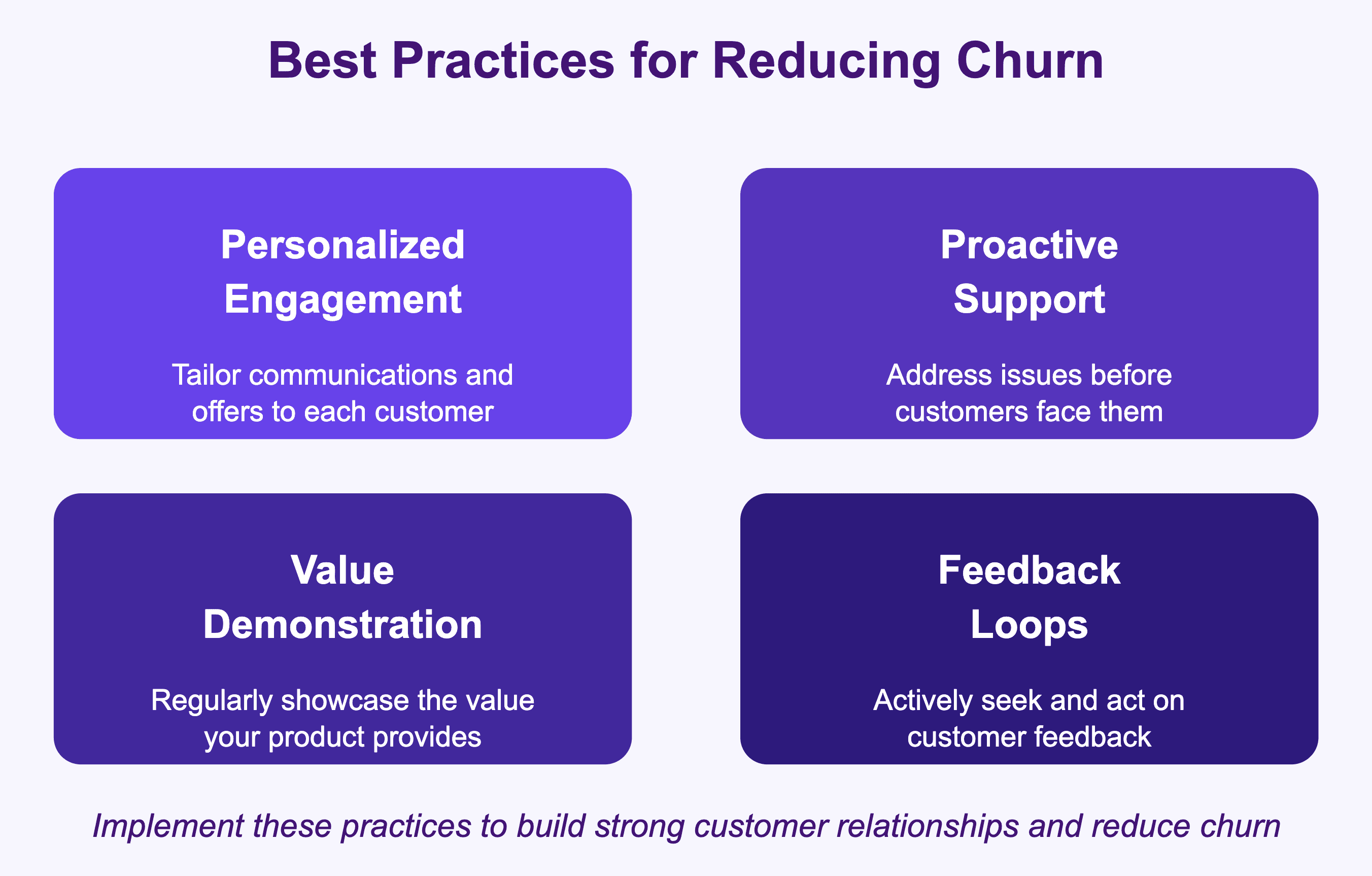
While predicting churn is important, taking action to prevent it is crucial. Some best practices include:
Personalized engagement: Use churn predictions to tailor communications and offers to at-risk customers.
Proactive customer support: Reach out to customers before they experience issues that might lead to churn.
Continuous value demonstration: Regularly showcase the value your product or service provides to customers.
Feedback loops: Actively seek and act on customer feedback to improve your offering.
Churn prediction tools
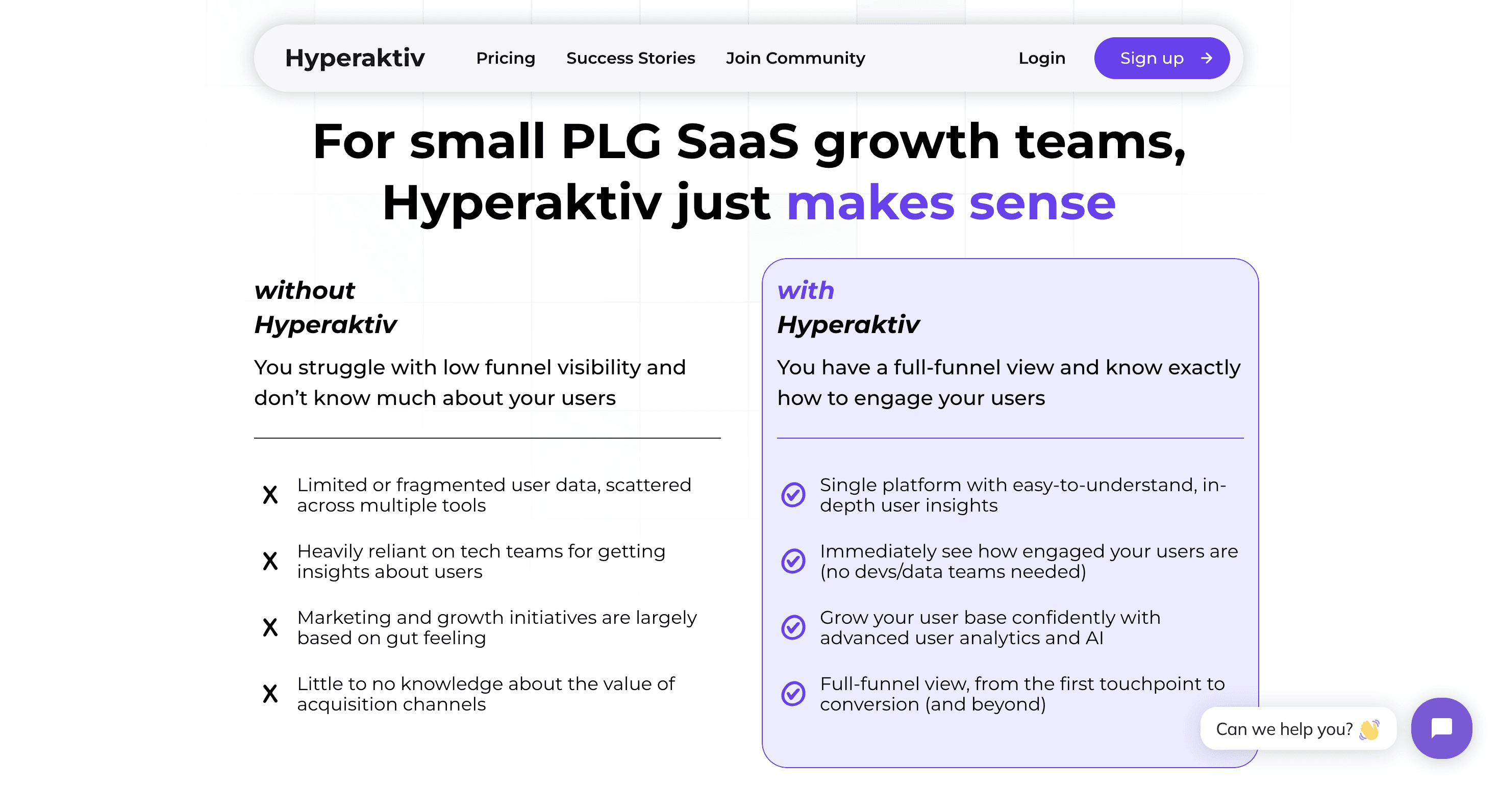
Hyperaktiv.ai specializes in user analytics and engagement for product-led growth (PLG) SaaS companies. It provides hyper-personalized customer engagement and detailed user insights to help businesses drive growth and reduce churn.
Choose Hyperaktiv.ai for its advanced user analytics and AI-driven insights, which enable you to understand and engage your users effectively.
Pricing: Offers a free plan with basic features; custom pricing available for advanced features and larger teams
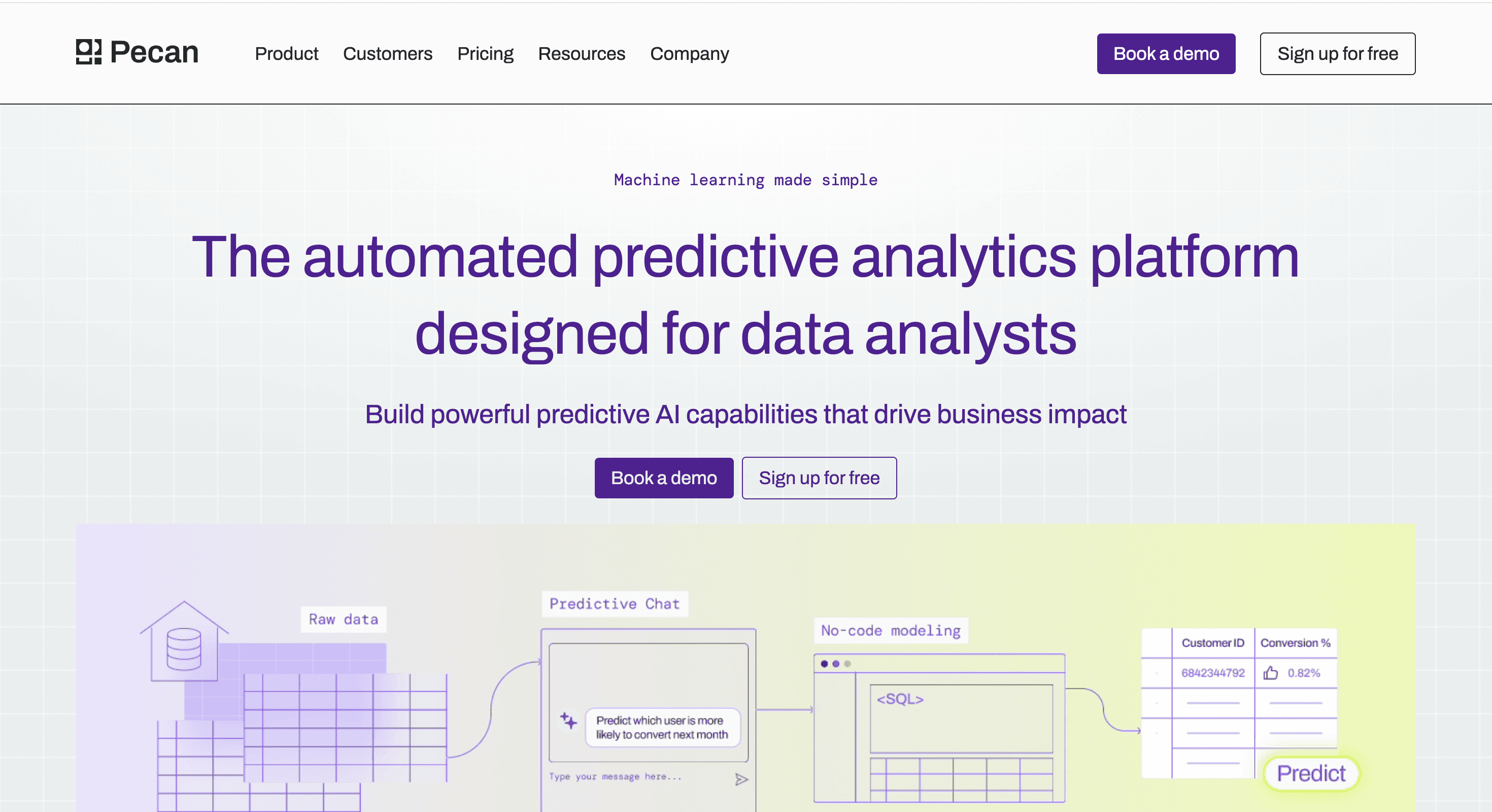
Pecan AI uses advanced machine learning algorithms to predict customer churn with high accuracy. It integrates seamlessly with various data sources to provide actionable insights.
Choose Pecan AI for its ease of use and robust predictive capabilities.
Pricing: Custom pricing based on business needs
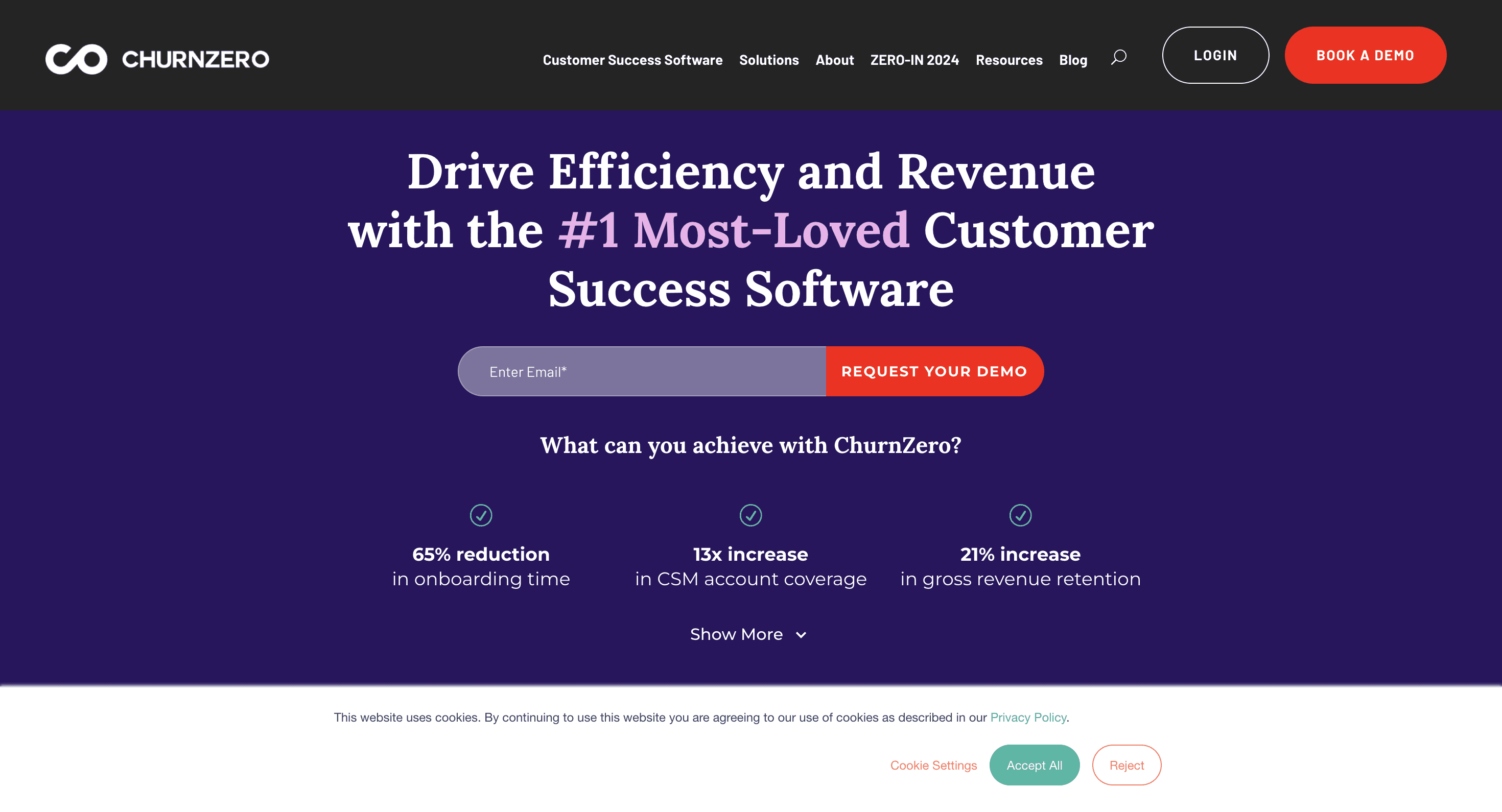
ChurnZero offers real-time customer health scores and automated workflows to help reduce churn. It provides detailed analytics and customer engagement tools.
Opt for ChurnZero if you need comprehensive customer success management features.
Pricing: Starts at $1,000 per month

Qualtrics CustomerXM leverages customer feedback and experience data to predict churn. It uses AI-driven insights to help businesses improve customer retention.
Choose Qualtrics for its strong focus on customer experience and feedback integration.
Pricing: Custom pricing based on the number of users and features
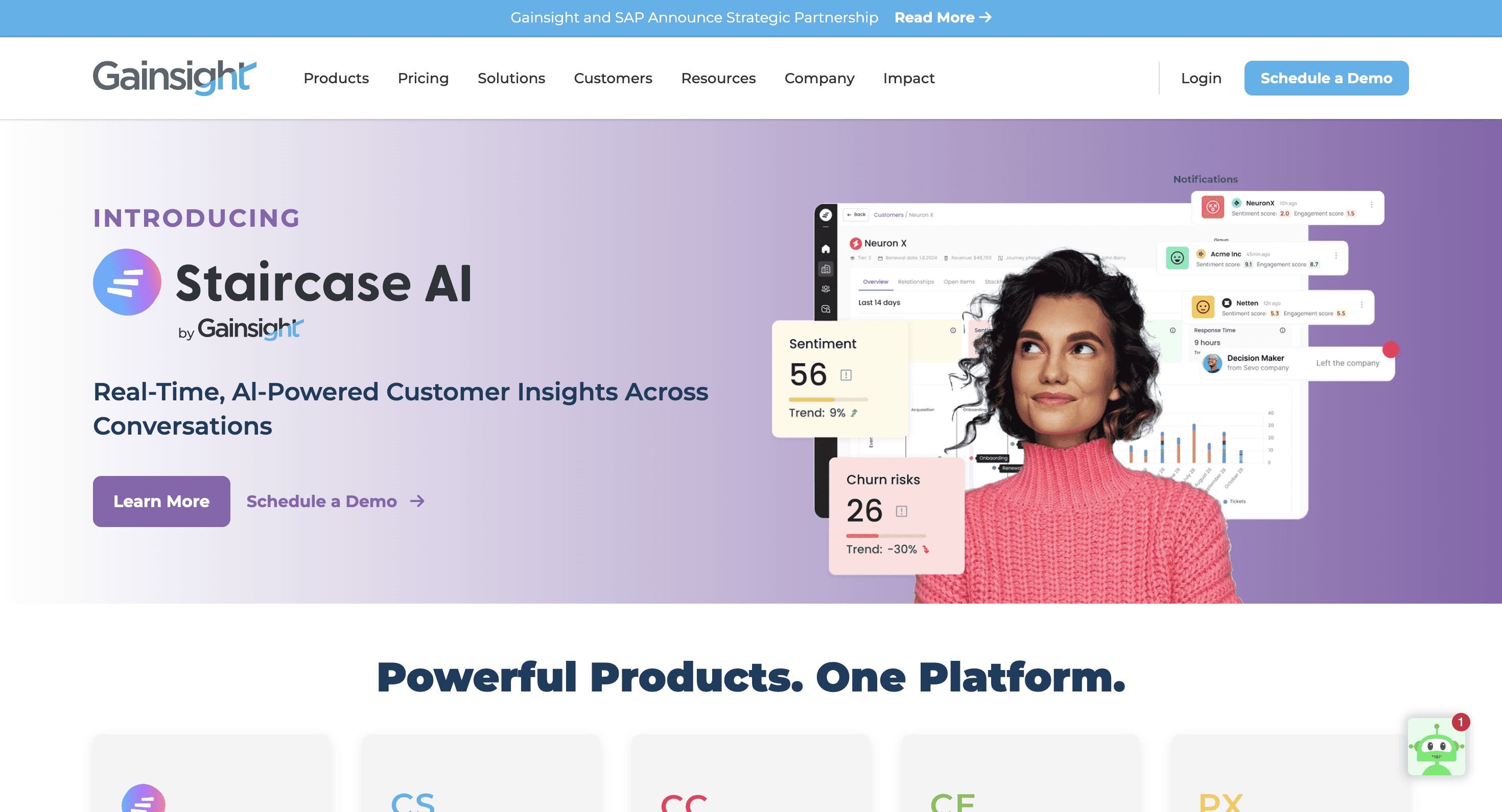
Gainsight provides a holistic view of customer health and predictive analytics to identify at-risk customers. It also offers tools for customer success management and engagement.
Gainsight is ideal for businesses looking for an all-in-one customer success platform.
Pricing: Custom pricing based on business requirements

KNIME is an open-source platform that allows users to build custom churn prediction models using a wide range of machine learning algorithms. It offers extensive data integration and visualization capabilities.
Choose KNIME if you prefer a flexible, customizable solution with strong data analytics features.
Pricing: Free for the open-source version; enterprise pricing available on request

Churnly uses predictive analytics to identify customers at risk of churning and provides actionable insights to retain them. It integrates with various CRM systems for seamless data flow.
Opt for Churnly for its user-friendly interface and integration capabilities.
Pricing: Starts at $500 a month.
Each of these tools offers unique features and benefits, so the best choice depends on your specific business needs and budget. For a quick setup, product-led growth SaaS Hyperaktiv.ai is your best choice. If you need a highly customizable and cost-effective solution, KNIME might be the best fit. For comprehensive customer success management, Gainsight or ChurnZero could be ideal. For businesses focused on customer experience, Qualtrics CustomerXM is a strong contender.




